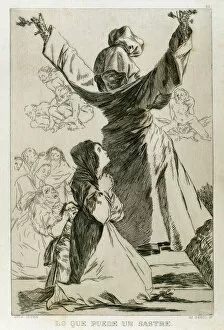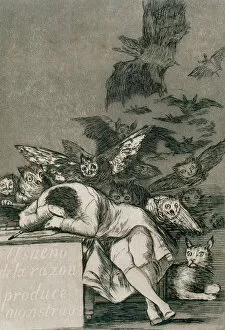Sarcastically Collection
Sarcastically capturing the absurdities of society, Francisco de Goya's 'Los Caprichos' remains a timeless masterpiece
For sale as Licensed Images
Choose your image, Select your licence and Download the media
Sarcastically capturing the absurdities of society, Francisco de Goya's 'Los Caprichos' remains a timeless masterpiece. As a Spanish painter and printmaker, Goya (1746-1828) skillfully portrays the follies and vices that plague humanity in this iconic series. With biting wit and sharp commentary, he unveils the hypocrisy lurking beneath societal norms. Through his intricate etchings, Goya exposes the caprices of human nature with an unapologetic gaze. In 'Los Caprichos, ' Goya delves into various themes such as superstition, corruption, and social hierarchy. His keen eye for detail brings to life grotesque characters who embody these flaws. From foolish nobles engrossed in their own vanity to gullible individuals falling prey to irrational beliefs, each image serves as a satirical mirror reflecting our collective shortcomings. Goya's mastery lies not only in his technical prowess but also in his ability to provoke thought and elicit emotions through art. His use of dark tones creates an eerie atmosphere that heightens the sense of irony within each scene. The artist challenges us to question our own actions and motivations by presenting exaggerated versions of ourselves. Even centuries after its creation, 'Los Caprichos' continues to resonate with audiences worldwide. Its relevance persists as we recognize similar patterns repeating throughout history – reminding us that while times may change, human folly remains constant. So let us delve into Goya's world; immerse ourselves in his sarcastic critique of society; marvel at his artistic genius; and perhaps find moments of self-reflection amidst the laughter or discomfort stirred by 'Los Caprichos. ' For it is through satire that we can confront our flaws with honesty while appreciating the enduring power of art.


